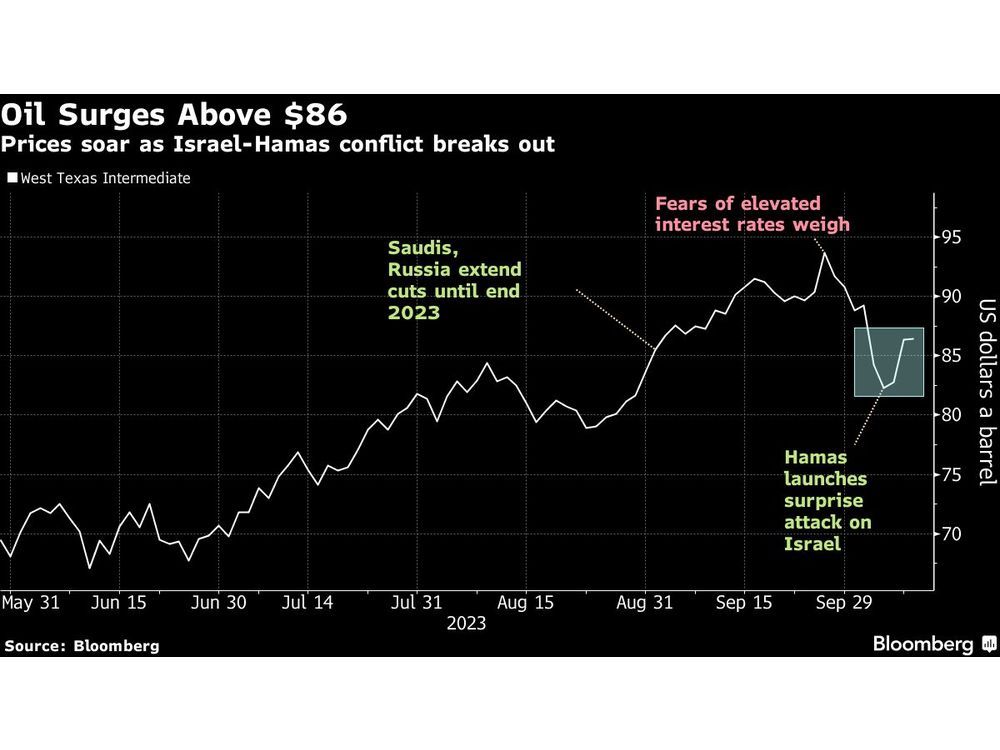
Article content
(Bloomberg) — Oil steadied after its biggest jump in six months as Israel said its retaliation for attacks by militant group Hamas over the weekend had “only started,” increasing the prospect of fresh instability in the Middle East.
West Texas Intermediate traded near $86 a barrel after surging 4.3% on Monday, as markets reacted to fighting that started Saturday and reignited a conflict with broad repercussions across the region. Israel has announced its largest-ever mobilization of more than 300,000 army reservists as it attacked Gaza from the air and sea, with Prime Minister Benjamin Netanyahu vowing to “change the Middle East.” Hamas threatened to execute hostages.
Article content
The conflict has ratcheted up oil’s volatility, following sizable swings over the past month as economic concerns weighed on a rally underpinned by supply cuts by Saudi Arabia and Russia.
While Israel’s role in global oil supply is limited, the outbreak that has already caused more than 1,500 fatalities threatens to embroil both the US and Iran. Any retaliation against Tehran, which supports Hamas, could endanger the passage of vessels through the Strait of Hormuz, a vital conduit that transports much of the world’s crude and which the Iranian government previously threatened to close. Iran denied on Monday that it was involved in the assault.
The Islamic Republic has become a major source of extra crude this year, alleviating otherwise tightening markets, but additional American sanctions on Tehran could constrain those shipments.
“When we’ve seen Palestine-Israel conflicts in the past, the price premium that we’ve seen baked into oil prices has been quite temporary” because of the limited impact on supply, Vivek Dhar, director of mining and energy commodities research at Commonwealth Bank of Australia, said in a Bloomberg TV interview. Currently, there’s a “real scenario where there is disruption,” depending on how much blow-back there is against Iran, he said.
The conflict has turned the spotlight away from demand and supply fundamentals, with OPEC on Monday raising its forecasts for global oil demand through to the middle of the century. Thursday will see a flurry of indicators — including monthly market reports from the cartel and the International Energy Agency, as well as weekly US inventory data.
To get Bloomberg’s Energy Daily newsletter into your inbox, click here.
—With assistance from Sarah Chen.
Share this article in your social network